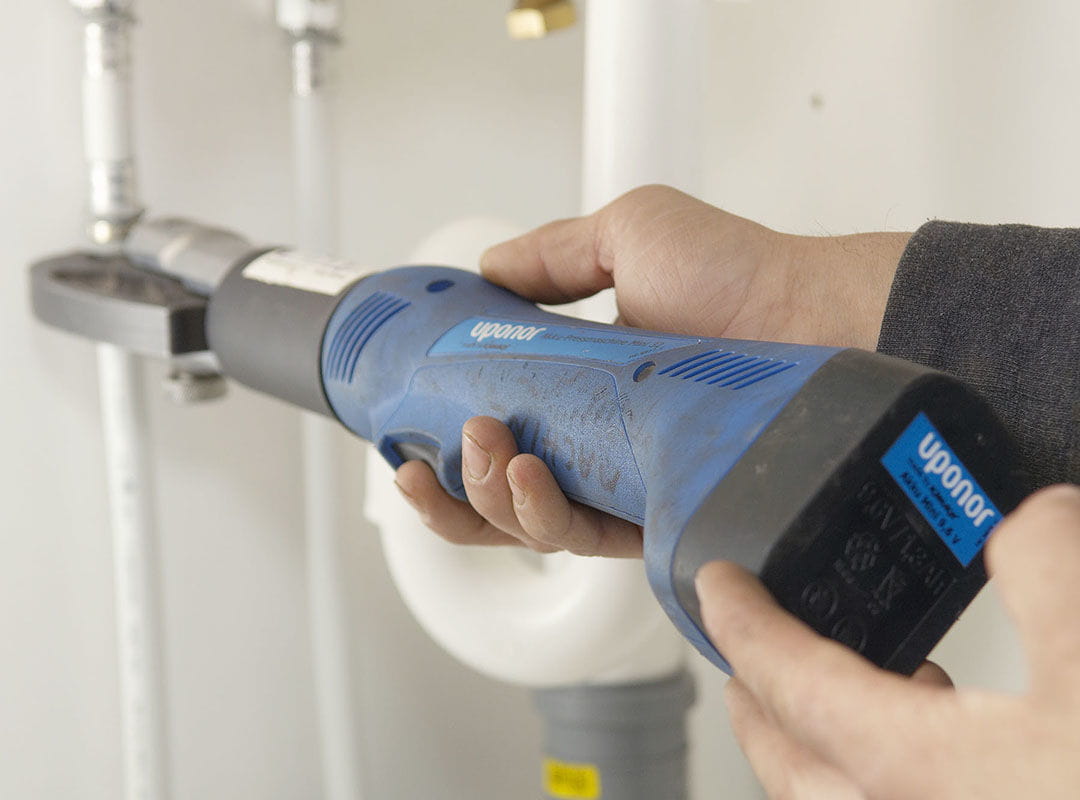Why choose MLCP over Copper?
Rising copper costs due to worldwide changes in demand
Copper prices always remain susceptible to fluctuations, as changing demand patterns from Asia, external shocks and production capacities all have an impact. Indeed, it is estimated that China's demand (Platts, 2018) alone for copper is set to rise by over 400,000 million tonnes in 2018.
With only a finite production capacity, worldwide supply is struggling to keep up with this increase in demand. As such, prices increase and alternatives are considered.
At Uponor, we believe we offer a faster, cleaner, cost-effective and more secure alternative to copper pipe systems. But in order to form your own opinion, we have provided a comparison between Uponor's MLCP solution and copper based systems below
With only a finite production capacity, worldwide supply is struggling to keep up with this increase in demand. As such, prices increase and alternatives are considered.
At Uponor, we believe we offer a faster, cleaner, cost-effective and more secure alternative to copper pipe systems. But in order to form your own opinion, we have provided a comparison between Uponor's MLCP solution and copper based systems below
So how does multi-layer composite pipes compare to copper pipe systems?
MLCP
- Fewer connections- with pipes available in 3m or 5m straight lengths and in various flexible coil lengths, a typical installation requires fewer connections. This saves time, money and reduces any potential for leaks
- Hygiene- with the MLCP pipe capped at manufacture, it is hygienically clean when it arrives to be installed and resists lime-scale formation. Overall, this means that they are ideal for carrying drinking water
- No hot works- no soldering is required to construct an Uponor MLCP joint. This in turn means that it is one of the most cleanest and safest solutions on the market. If you would like to find out more about the jointing process, please visit the MLCP product page
- No Corrosion- Uponor MLCP systems are not susceptible to the ravages of corrosion
- Watertight first time- One of the most frequent comments we hear from new users of Uponor MLCP is the surprise that the system is always watertight first time. What's more joint security can be tested via inspection windows
Copper
- More connections- Usually sold in rigid 3m lengths, copper systems usually needs many connections just to navigate bends and obstacles. Each connection takes time, costs money and adds potential weaknesses in a system
- Hygiene- copper pipes that are open-ended and left unprotected can already harbour dirt and bacteria before they are even installed. These contaminants are hard to remove from a system once they establish themselves in a bio-film
- Hot works- on many installations, plumbers are required to obtain a ‘hot-works permit’ before undertaking any soldering. This process adds time to the installation as well as cost. Soldering can also be of concern to the building and installers on site
- Corrosion- being a metal, copper is highly susceptible to many types of corrosion including ‘pitting’ and ‘erosion corrosion’
- Leaks- we are often told that many copper systems need more tightening or soldering when they are first filled. This is often due to the greater number of connections, and some connections made in inaccessible areas. The process to inspect a connection after installation can also be costly and time consuming, as x-ray technology may be required.
What about sustainability?
When considering transportation, manufacturing and disposal, MLCP is a lighter product than copper and this in turn significantly reduces the environmental impact.
The process by which copper is mined, refined, transformed into end products and then used — such as pipe — is very energy-intensive, using a great deal of non-renewable energy during its lifetime. And, copper piping systems can have a much shorter lifespan compared with MLCP because of the corrosion and pinhole leaks that can happen with harsh water systems.
Although, MLCP is derived from non-renewable sources, it has multiple applications over a lifetime as opposed to fuel which is a onetime application. Whats more, the flexibility properties of MLCP means that less fittings are required.
The process by which copper is mined, refined, transformed into end products and then used — such as pipe — is very energy-intensive, using a great deal of non-renewable energy during its lifetime. And, copper piping systems can have a much shorter lifespan compared with MLCP because of the corrosion and pinhole leaks that can happen with harsh water systems.
Although, MLCP is derived from non-renewable sources, it has multiple applications over a lifetime as opposed to fuel which is a onetime application. Whats more, the flexibility properties of MLCP means that less fittings are required.
MLCP benefits over Copper in a nutshell

- Designed to last- Uponor have been supplying MLCP for use in both domestic and commercial installations for over 25 years. However, the entire system has also been tested and proven to have a design life of over 50 years
- Designed for inherent flexibility- the key to the success of the MLCP system is the ability of the pipework to form around corners and obstructions without having to add fittings or connections. This feature is ideal where pipework is to be installed within a wall, ceiling or under a floor perhaps
- Designed for speed- the simple 3 step installation process of - cut the pipe, add the fitting, press the connection - does not need deburring or calibration of the pipe. Our special design means that each connection can be completed in seconds
- Designed to make your life easier- our system is not only fast, efficient, safe and secure, we also offer complete project and installation support, including FREE on-site, certificated installation training.
The concerns with copper
According to the Drinking Water Inspectorate, the proliferation of “blue water” is most commonly caused by the corrosion of copper pipes. This can often lead to undesirable consequences such as stomach aches and nausea. Continue reading this article